Notes
News Photos: Taking 2 Quakes to Feel for Mexico
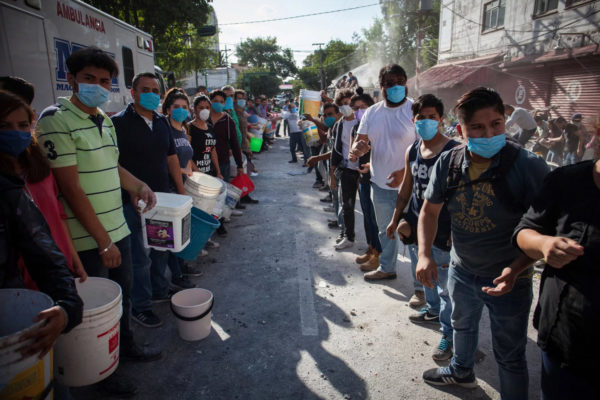
Should it take a double disaster to focus more intimately on human suffering?
I had been drafting a post about the photo coverage of Mexico’s deadly earthquake on September 8th. That was before the second one, centered 100 miles south of Mexico City, shook the capital with a 7.1 magnitude. I was going to highlight how many of the photographs that followed—especially in the U.S. press—treated buildings and the ground as their most significant feature. I was going to point out how human beings were “decentered” in the photos, playing supporting roles alongside a landscape whose charismatic force was overwhelming. I was going to ponder whether that focus on the land was a matter of visual distancing in the face of Mexico’s foreignness or a strategy for creating common ground between Mexico, Texas, and Florida as natural disasters ripped across them all in quick succession.
That post only makes partial sense now because the morning after the second quake the photographs appearing in U.S. newspapers shifted dramatically. The double tragedy of back-to-back earthquakes (the second echoing the lethality of the Mexican earthquake on the same day in 1985) have changed the photographic attitude overnight
Today we see people. Active people. People at the center of the scene. People caring for their compatriots. People crowding streets in fear of aftershocks. With an emphasis on the parents whose children were in the collapsed Enrique Rebsamen School, the anxiety, solidarity, and loss of the people of Mexico City are now in the spotlight.
That is powerfully the case for the photograph that opens this post. Today, photos of citizens standing in long lines, passing rubble down human chains to aid rescue efforts, have become an emotional signature of Mexico’s loss. That many of the citizens in the photo seem to staring at us further heightens the emotional experience.
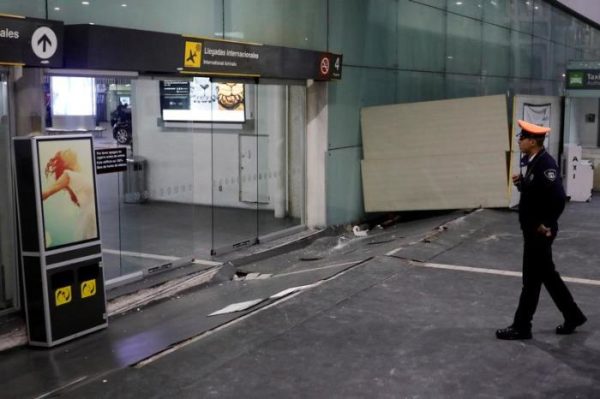
The photographs of the September 8 earthquake often have people in them, but more often than not they are of secondary importance to the scene. Tiny, passive, and off to the side, they gaze in shock at collapsed buildings, walk through shattered hallways, or sit on the side of otherwise deserted streets.
This photograph of a guard at Benito Juarez International Airport exemplifies such photographs. The ruptured floor takes up more than half of the photograph’s visual space. The woman in the advertisement on the far left—seemingly about to fall through the crack in the floor—is as visually weighty as the guard on the right who seems to have accidentally wandered into the frame of the photograph, stunned by the damage. Likewise, the bright, cracked pavement in a Coatzacoalcos courtyard is quite clearly the subject of the photograph, its owners shunted aside into the shadows.
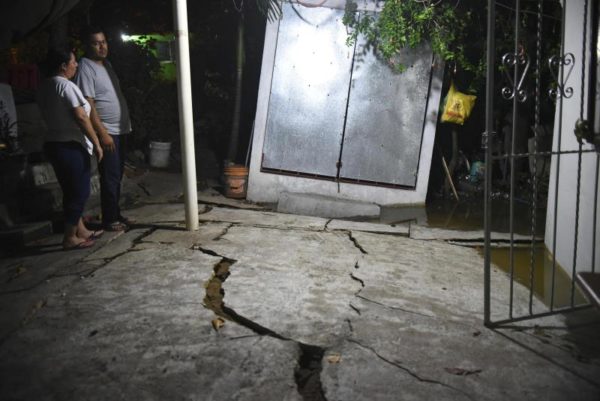
Photographs of rescue efforts underway show the shift in perspective perhaps most forcefully. The two pictures below, the first from September 8 and the second from September 19, though they are perhaps extreme examples, powerfully illustrate the difference in the two quakes’ dominant images. Where once we saw tiny workers dwarfed by the magnitude of the shattered earth around them, we now face determined rescuers standing above and in the center of the wreckage.
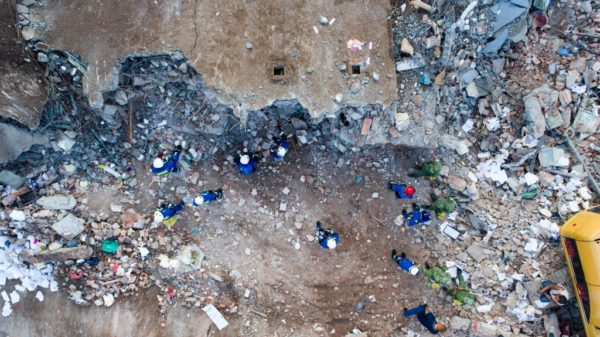
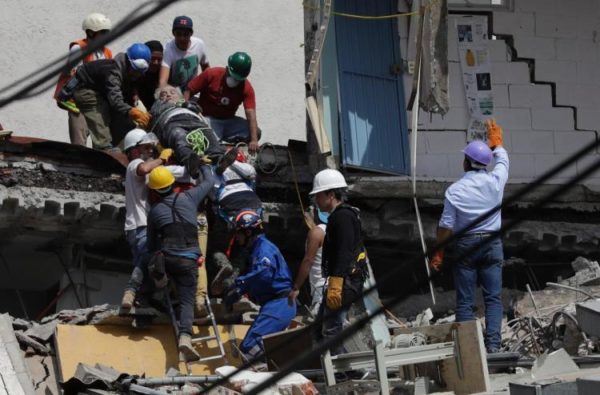
Maybe it’s too simple to say that the piling-on of tragedy awakens a human awareness that was lacking before. That it forces particularity rather than a sense of generic natural disaster. It could be that the denser population of Mexico City just inevitably means there are more people in the frame or maybe media outlets need a new focus to distinguish this earthquake from the previous one.
But I suspect that the shift is, at least in part, a case of human sympathy welling up as the horror doubles. After all, the quakes could have been distinguished as more rural and more urban and photographers always have choices about framing. The ground remains treacherous—rippling, shaking, too soft to sustain buildings. Infrastructure collapse remains visually impressive. But the living and the dead, the injured and the rescuer take center stage in the second earthquake. That says something about how the photographers and those of us looking on are interpreting the scene before us.
There are risks to centering human experience in tragedy. The evils of disaster porn, with its shock of emotion and lingering apathy, are well known. But given a choice between pictures that sideline human victims in favor of deadly terrain and pictures that foreground human tragedy and resilience in the face of that treacherous ground, I’ll choose the latter. It shouldn’t take a double disaster to get there.
— Christa Olson | @christajolson
Photo: Latincontent / Getty Images Caption: Rescuers and residents look for victims amid the ruins of a building knocked down by a magnitude-7.1 earthquake that jolted central Mexico on Tuesday. Photo 2: Edgard Garrido/Reuters. Caption: Damage on the floor is seen in an entrance of the Benito Juarez International Airport in Mexico City. September 8, 2017 Photo 3: Angel Hernandez / European Photopress Agency/EFE. Caption: A couple looks at the damaged floor of their yard in Coatzacoalcos. September 8, 2017. Photo 4. Mario Vazquez/AFT/Getty Images. Caption: Rescuers search for survivors amid the ruins of buildings in Juchitan de Zaragoza. September 9, 2017. Photo 5: Rebecca Blackwell/Associated Press. Caption: An injured man was pulled out of a collapsed building in the Roma Norte neighborhood of Mexico City. September 19, 2017.
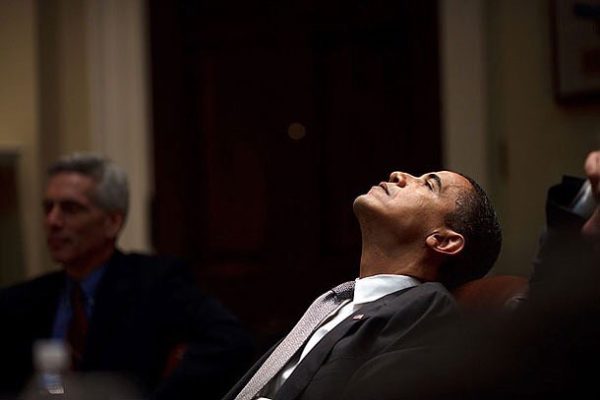
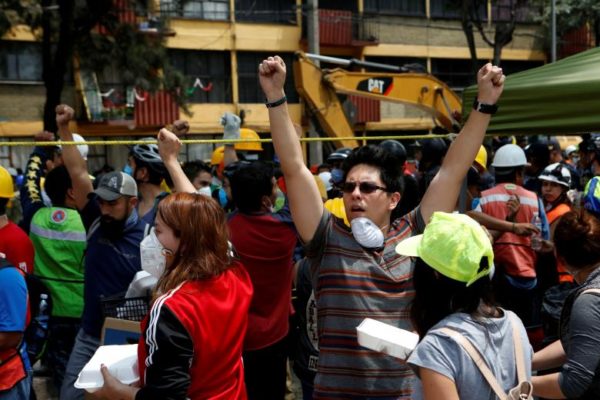
Reactions
Comments Powered by Disqus